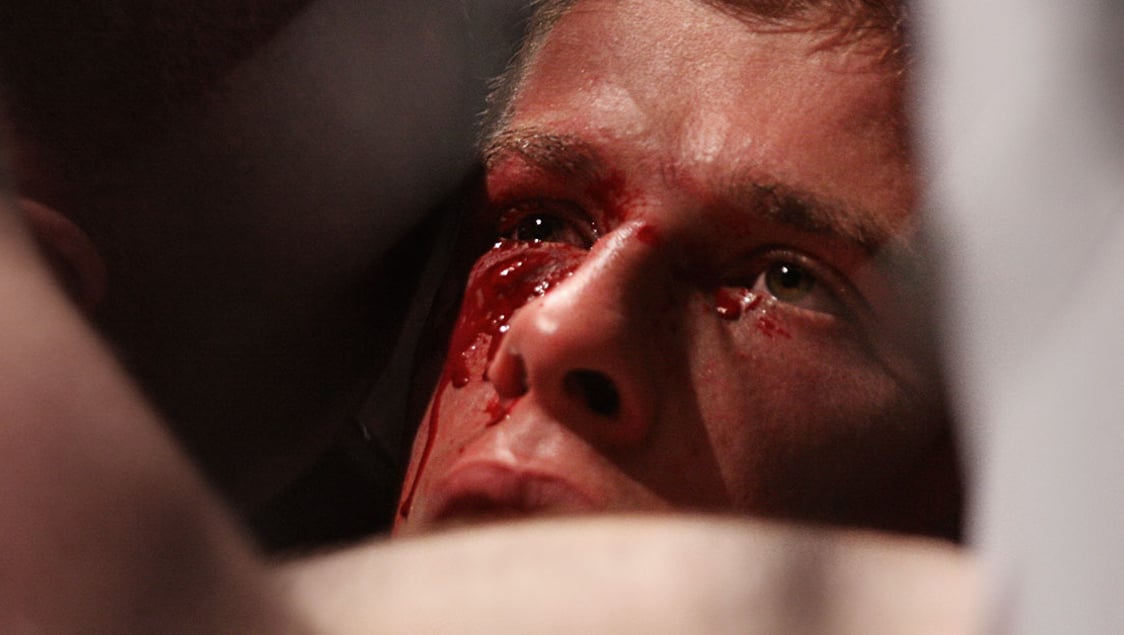
Issue 202
February 2024
--WARNING! GORE & INJURY BELOW--
A deep dive into how MMA stars return to form after being sidelined by the physical and psychological injuries that would unravel most other athletes. Are MMA fighters built mentally tougher when it comes to injuries?
Pain and MMA go together like zombies and treadmills – an endless chase. Getting banged up is part of the 15-minute spectacle, and the injuries generated often come with their own time scales. Broken arm: 3-6 months. Sprained ankle: 2-3 months. Torn muscle: 3-6 weeks. While the bones heal and bruises disappear, the mental scars can remain for years. These unwelcome souvenirs are the brain’s way of creating a maraca-like click of the fingers to deliver a constant reminder of past injuries. The psychological struggle of recovering from a severe injury is a less discussed but equally crucial aspect of a fighter's journey. While some fighters come back stronger, others never return to their former glory. The line in the sand between these contrasting outcomes can often separate legacy from nullity. What follows is an exploration of the mental landscape fighters navigate post-injury and the scientific research needed to understand if a fighter returning from injury will be a hit or miss.

THE PHYSICAL TOLL AND THE MENTAL BATTLE
MMA injuries can create a morbid fascination, but sometimes, their skin-crawling appeal makes you want to get up from your couch, unzip yourself from your human suit, and run your skeleton into the woods. You’ve probably been entertained by these car crashes while watching greats like Anderson Silva and Conor McGregor, who have displayed their leg-dangling moments. Silva suffered a gruesome tibia break during his rematch with Chris Weidman at UFC 168. McGregor experienced a similar fate with a leg break against Dustin Poirier at UFC 264. Some would argue that Silva was never the same fighter, and this injury was the precipice of his downfall. There are few fight fans on the planet who don’t hope for a different fate for McGregor.
While physical healing is quantifiable, the mental recovery is a hero’s journey that’s often unique to each fighter, yet it’s something that’s becoming increasingly documented. According to a systematic review in the journal Burns and Trauma, athletes facing recovery from a severe injury undergo stressors similar to people experiencing major life crises. Sports-related stress disorder could be the greatest challenge to return to competition for injured athletes. This stress, comparable to PTSD, can manifest as anxiety, depression, and a loss of athletic identity, profoundly impacting their return to the sport. The mental wounds are often left unchecked in a fighter’s brain to stroke a white cat and cackle evilly.
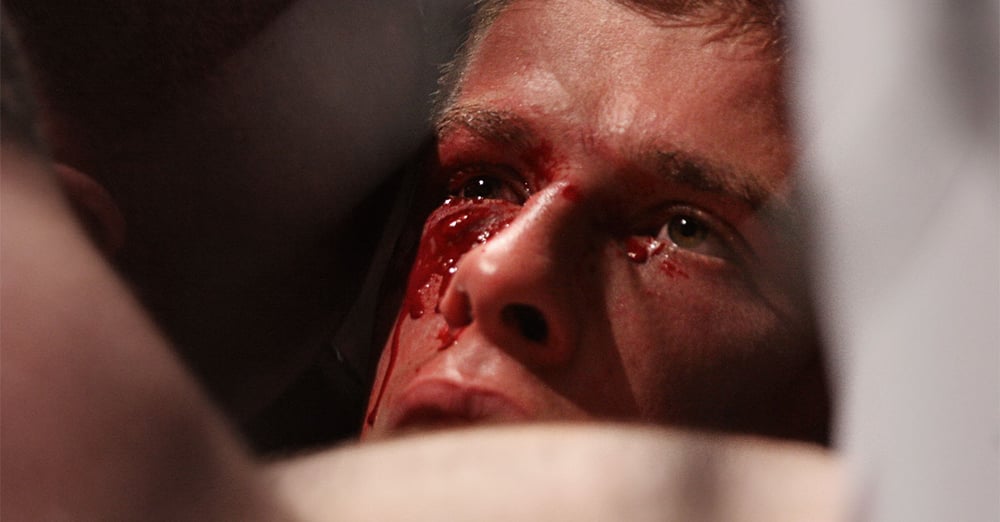
INJURIES HOLDING GUARD
Severe injuries in MMA hit every fighter differently. When Dan Hooker shrugged off multiple broken bones as “just a scratch” after his bout with Jalin Turner at UFC 290, he seems to have found positives in the experience. Several months later, his arm bandaged, he captioned a picture of himself saying: “Staying accountable while I’m injured, not using this as an excuse to get out of shape and be unhealthy. True blessing in disguise as it was a real wake up call to take better care of myself outside of training. In the long run I will cherish this injury and the lessons it has provided.”
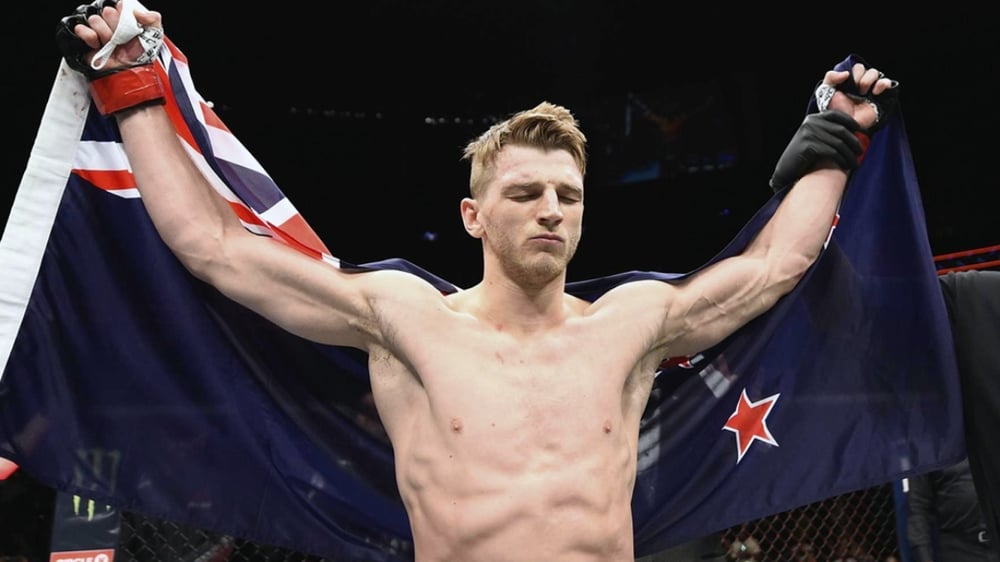
Detractors of his positivity may say it’s easy to stay upbeat if you’ve won, as Dan did to a great deal of celebrating about his high fructose mental resilience. As is often the case, things may get a little trickier when a fighter clocks up a loss. At UFC 261, Chris Weidman lost to Uriah Hall in 2021 thanks to a snapped leg. He was the first to admit that that experience took its toll.
“When my leg broke, when I kicked Uriah Hall, and I fall back, and my leg’s not there anymore – which I didn’t realize because I was like, ‘Man, there’s no way Uriah Hall takes any more of those kicks’ – as I go down the first time I spotted my leg with my eyes the first thing I that went through my mind was, ’This is my leg! That’s exactly what Anderson Silva’s leg looked like! This is weird! That’s my leg! This is f***ing crazy!’” he said.
“The only time I’ve really seen it was with Anderson Silva, so all of a sudden, it’s my leg. It was mind-effing, you know? That’s crazy.”
After two years away, Weidman’s comeback bout against Brad Tavares at UFC 292 was less alpha and more Betamax by name and nature. Tavares outpaced and out-maneuvered his opponent from the first round, much of which was targeted at Weidman’s recently healed leg. It was a calculated gameplan from Tavares applied with precision to the formerly undefeated UFC champion. You may think an opponent who does has the moral compass of a guy you’d find on a bridge at 1 am with a bag of kittens, but you’re wrong. Every adversary will always target your weak points, showing how challenging an injury from external and internal forces can be. With Weidman scheduled to return in March 2024 against Bruno Silva, we’ll see how significant this injury has been to his career.
IDENTITY CRISIS
Almost every fighter's sense of self is yoked to their physical prowess and the ability to compete. When that is compromised, it can lead to a severe identity crisis. Sports psychologists call this "athletic identity foreclosure," where athletes prematurely confront the end of their competitive careers. A paper in Science Direct found that an athlete's sense of self is often wrapped up in their personality, and without it, there’s a feeling of being lost.
Fighters like Dominick Cruz have openly discussed the mental hurdles of coming back from injuries. Cruz, the former UFC Bantamweight Champion, faced a series of injuries that kept him out of competition for the better part of three years. In interviews, he has highlighted the mental resilience required to overcome the despair of being unable to do what defines you.
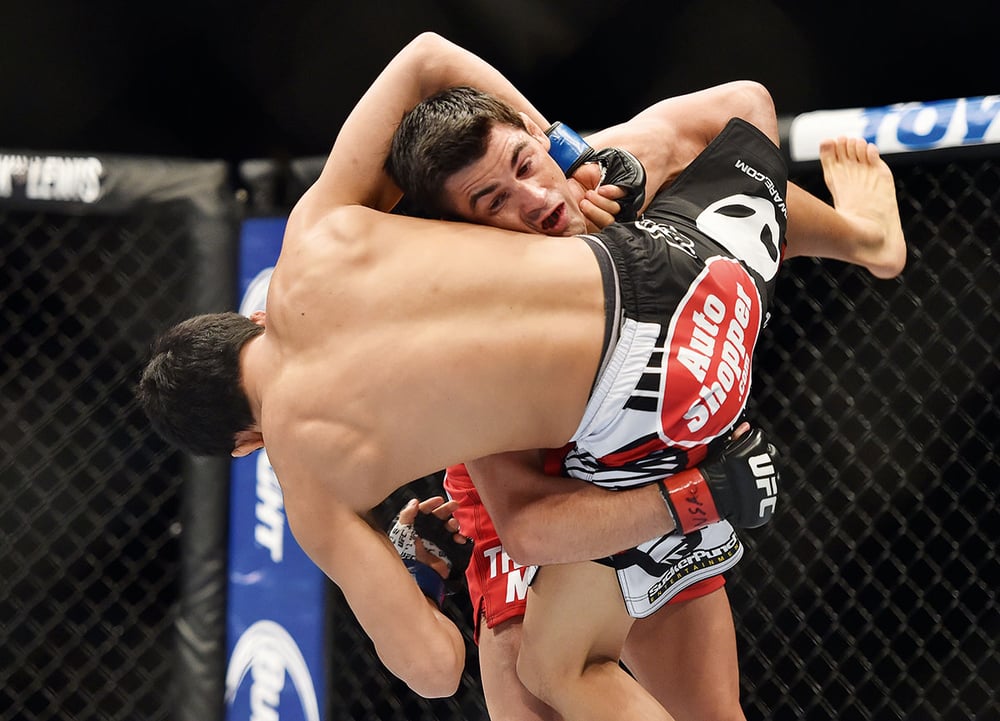
“Every time you blow your knee out, your leg shrinks to nothing, so you’ve got to rebuild it,” said Cruz. “It takes nine months of rebuilding, nine, eighteen, you do the math.
Injuries while training are among the most challenging things you can ever deal with. I was so depressed at one point I just didn’t really want to live.
I think the biggest thing I learned through the injuries is that when in doubt, focus out.”
How an athlete identifies their inner self is never static and is constantly evolving, especially around injuries that force them to reassess who they are, found a systematic review in the journal Sports. While a fighter’s body has to overcome trauma, the mind has an equal journey to traverse back to where it once was, which is far more difficult if there’s severe mental anguish caused by depression.
SPORTS SHRINKS
The field of sports psychology has increasingly become a critical component in the rehabilitation process. Post-fight injuries are all but guaranteed after any MMA fight, even a TKO, an injury that is the equivalent of a mini concussion. This unfortunate fate was something Georges St-Pierre suffered after his first defense of the Welterweight Championship at UFC 69 against Matt Serra. Serra was an 1100-1 underdog who threw a relentless flurry of punches and sat GSP for a stoppage that shocked the MMA world.
Surprised. Rattled. Beat up. GSP was predicted to be the next champion of champions but had a long road to recovery. As a fighter known for working on his weaknesses until there were no weaknesses, he famously hired a sports psychologist. The psychologist got the Canadian to carry a brick around with him for several days, then throw it away. The brick was the intense weight of the loss to Matt Serra, and getting rid of it helped GSP kicks start a run of victories that would see him become one of MMA’s all-time greats.
“Right away, I felt the relief,” explained GSP. “And I know it sounds weird, but it’s something that really works for me as an athlete.”
How well did this tactic work? GSP never lost another fight. It helped kickstart a positive mental attitude that saw just one blemish on his impeccable UFC record. Sure, while there are fighters who have zero losses, perhaps being able to get injured while losing, then devising a plan to come back and never lose again might be the hallmark of the most inspirational sports psychology game in MMA’s history.
THE COMEBACK
Fighters like Georges St-Pierre (GSP) embody resilience. After his knee cracked like a glow stick during training and he tore his ACL, GSP faced doubts about his ability to return to his former glory. However, he reclaimed his title and position in the sport through a rigorous recovery regime and solid mental game. The science behind actions like these is slowly catching up with the sport of MMA. A systematic review of sport psychology in MMA examined eight research papers on mental resilience and found four essential perspectives on injuries. These are as follows:
1. Fighters who relied on making money from the sport had higher amounts of stress.
2. All MMA athletes of varying levels have the greatest fears of losing or becoming injured.
3. MMA fighters try to subdue their fears by treating every fight as “another day in the office” and using positive self-talk.
4. MMA is continuously growing. Unfortunately, the lack of sports psychology research done on the competitors and sports is self-defeating because the fighters will not recognize the importance of psychology.
After reviewing the data, the researchers suggest that to develop mental resilience, MMA participants should dedicate time to learning self-regulation skills, exploring their fears, and understanding the potential financial stress of MMA as a career. Likewise, trainers of MMA fighters should realize that they should emphasize mental skills within the talent development process. Research suggests that psychological training to respond to an in-fight injury might be as crucial as training to hit the pads.
The Fear of Re-Injury
The ‘why’ behind the psychological hurdle post-injury is well-worn territory, but if you want it fed to you like peeled grapes to a Roman emperor, it’s summarized by fear. Specifically, fear of re-injury. This fear can be debilitating, often leading to a cautious approach that can be detrimental in a high-stakes environment like MMA. A study in the journal Sports Health found fear of re-injury can lead to decreased performance, altered movement patterns, and even withdrawal from the sport. Most curiously, it can hamper rehabilitation outcomes, and getting over this fear can accelerate the recovery process.
And while MMA is one of the world’s most brutal contact sports, MMA athletes can make a comeback after an injury, especially when they’re in their prime. MMA fighters are most likely to get injured when they’re 30 years old, but 94.4% of injured athletes were able to return to professional MMA, according to research in The Physician and Sportsmedicine. Most fighters take roughly 7 months between injury and their next fight, and there is no significant difference in winning percentage in the post-injury period. This means that when done right, an MMA athlete returning after an injury should experience no decline in their physical performance following an injury.
COMING BACK STRONGER
The psychological battle to trust the body again, to engage without the lurking fear of another catastrophic injury, is a silent battle fighters fight every time they step into the Octagon. To this end, the story of Rose Namajunas speaks volumes about the mental aspect of recovery.
After a brutal slam by Jessica Andrade at UFC 237, Namajunas contemplated retirement, but some unexpected benefits surfaced.
“The first fight was so different from the second fight as far as I didn't really sustain any damage even though I got KO'ed,” she explained. “Actually, the neck problems that I had went away after getting slammed on my neck, which is kind of weird and sort of a miracle for me."
There were more positives to be gained from the injury. Andrade broke Namajunta’s nose in the second bout, which led to her having repair work done to her a deviated septum that had negatively impacted her breathing for years. Afterward, Rose clocked up two more victories and a loss by a split decision to Carla Esparaza, which many fans thought she clinched. Every cloud has a silver lining, which isn’t always obvious initially.
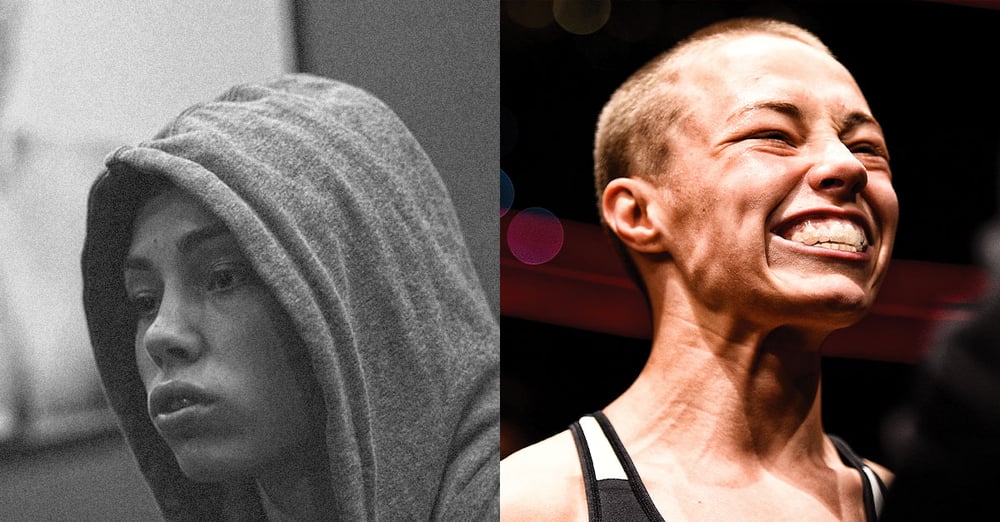
AN EYE ON THE COMEBACK
The GOAT of comebacks is arguably Michael Bisping. During his prime, he suffered a detached retina in his right eye, an injury that wasn't caused by a specific bout but was a cumulative result of his fighting career. The condition worsened and became particularly noticeable after his fight against Vitor Belfort in 2013.
After enduring an injury that would spell the end for most, losing sight in one eye, Bisping didn't just return to the Octagon; he re-entered as a force of nature, defying medical and sporting expectations. His recovery transcends physical healing, delving deep into the psychological tenacity and mental fortitude that champions are made of.
“My vision (in my right eye) was pretty much non-existent since 2013,” he told MMA Junkie. “I was just about able to scrape past the medicals. It was definitely touch and go. I was always terrified of doing a full training camp then being turned away by the commission doctor.
“It was difficult. To pass the medical test, you’ve got to have 20-200 vision, which is classed as clinically blind anyway, so it’s not very good – it’s not a very hard mark to pass. Some days, I could. Some days I couldn’t. But fortunately, I was just able to scrape by.
“People always say: ‘How did you fight with only one eye?’ And I always say: ‘With great f****** difficulty!'”
Bisping's comeback exemplifies the brain's incredible adaptability, known as neuroplasticity. After losing vision in one eye, his brain would have undergone re-mapping, adjusting to the new sensory input, and reorganizing itself to maximize the remaining vision. This adaptation involves strengthening neural pathways to enhance depth perception, spatial awareness, and reaction time, compensating for the loss of binocular vision. Bisping's ability to compete at the highest level, despite his injury, not only showcases his indomitable spirit but also underscores the remarkable adaptability of the human brain, marking him as a standout champion in the realm of injury recovery in sports history.
THE SUPPORT SYSTEM
The role of a support system – coaches, family, psychologists, and training partners – is pivotal in a fighter's recovery journey. This network provides the necessary emotional support and helps maintain a positive environment for recovery. The presence of a supportive entourage can significantly alleviate the psychological burden of recovery. The journey back to professional MMA after a severe injury is a multifaceted battle, extending beyond the physical realm into the psychological depths of a fighter's psyche. The stories of Silva, Bisping, McGregor, Cruz, St-Pierre, and Rose Namajunas, among others, highlight the mental fortitude and unwavering spirit required to overcome the darkest moments of an athletic career. These fighters may not always win, but they seldom retire hurt.
As sports psychology continues to evolve, the path to injury recovery in MMA is not just a physical trek but a mental odyssey, demanding every ounce of grit and guts a fighter can muster. The heaviest weights lifted are not in the gym but in the soul of their fighting spirit.

